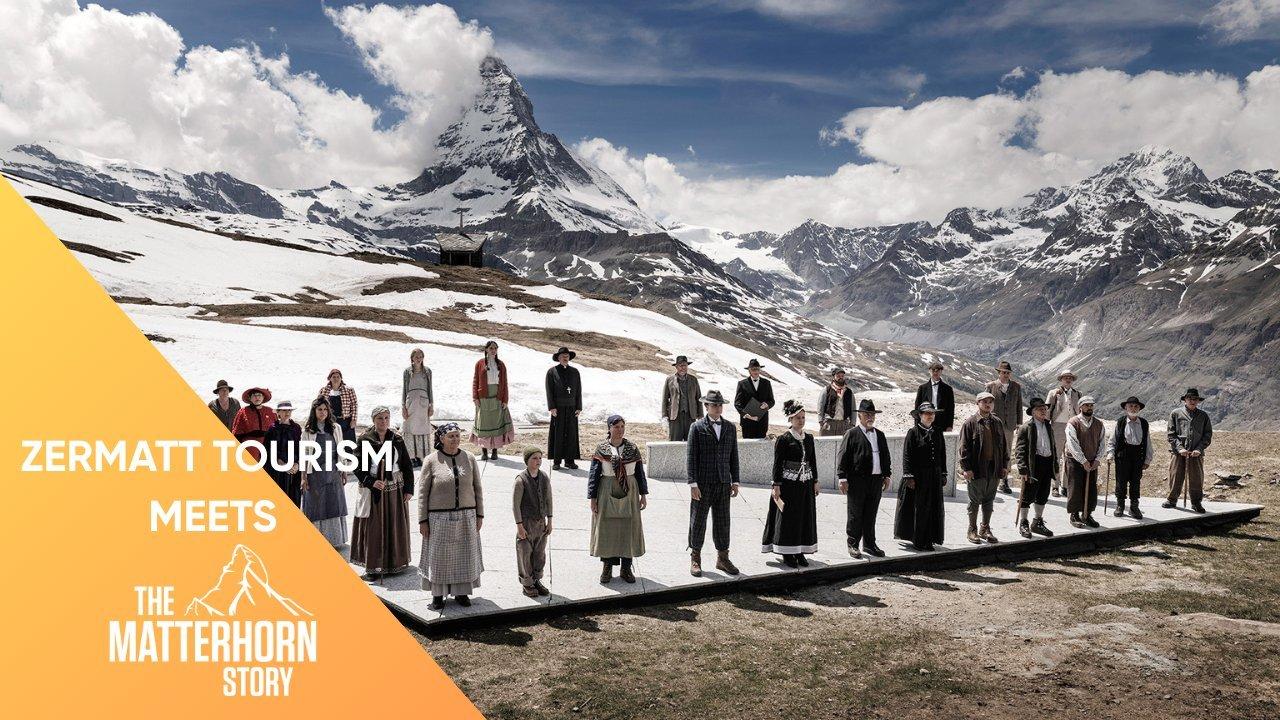Open-air theatre in front of the Matterhorn: A rehearsal visit to the Zermatt Open-Air Theatre
The anticipation and excitement are growing by the day: the new production of the successful play THE MATTERHORN STORY will celebrate its premiere on 27 June. Zermatt Tourism accompanied the theatre ensemble on the highest open-air stage in Europe during the final spurt of rehearsals.

The Matterhorn towers majestically behind the stage and the chapel on the Riffelberg. The mountain of mountains is the undisputed leading actor. No stage set in the world can compete with it.
On stage, the actors are required to interpret the text, gestures, facial expressions, movements and roles so strongly that they do not drown at the foot of the Matterhorn in the face of the impressive natural backdrop.
At the same time, the powerful presence of the Matterhorn, where the drama surrounding the first ascent of the Matterhorn on 14 July 1865 took place, helps the story to sink in, to be felt and to be brought to the stage with an authenticity that will touch thousands of people during 30 performances between 27 June and 23 August.
The head and heart of THE MATTERHORN STORY is author and director Livia Anne Richard. She says: "Stable, strong, free. We humans want to go through life like the Matterhorn. That's what we dream of."
The ensemble, for its part, is dreaming about the play these days, so busy are the performers currently in the final rehearsal spurt tweaking the last details, getting the best out of themselves to be ready in time for the season.
The story behind the story
THE MATTERHORN STORY is set in 1865, when Switzerland was the poorhouse of Europe. If we zoom in on the remote Valais, things were even more extreme: poverty, high infant mortality and widespread cretinism dominated the everyday lives of the people of Valais at the time.
In the 1840s, it was mainly English lords and ambitious mountaineers and their entourages who began to descend into this environment, into Zermatt, which today is unimaginably poor in mice, on the one hand to escape the terrible air in the cities of England (many of them suffered from respiratory diseases), and on the other hand to climb the Swiss four-thousand-metre peaks - preferably as the first.
Compared to these foreign guests, the Swiss were uneducated and simple mountain farmers who, in the absence of alternatives and completely against their (super)faith, agreed to guide these yearning guests into the mountains and to their summits for little money.
It meant an infinite amount of effort; the mountains had never been intended for them to climb. Being a mountain guide became ‘learning by doing’ .... And like today's Sherpas, it was not the local mountain guides but the English guests who made it into the history books.
THE MATTERHORN STORY does not focus on the first ascent as such, but on the fact that after four of the seven first climbers had not returned alive from the mountain, the eloquent Englishman Eduard Whymper accused the two local Zermatt mountain guides Peter Taugwalder father and son of having cut the rope, which is why the four men had fallen. He was also able to spread his version of the story worldwide through his various books, including his work ‘scrambles among the alps’, and went down in history as a hero, while Taugwalder father and son were unable to defend themselves against these accusations either intellectually or financially.
The fact is: the crash on the Matterhorn, during the first ascent of which four out of seven men died (one of them, Lord Francis Douglas (18), still lies somewhere on the mountain today), made Zermatt world-famous, at the same time marking the end of the golden age of first ascents and even causing Queen Victoria of England to consider a general ban on alpinist expeditions - she feared that the elite of the English aristocracy would kill themselves in the Swiss mountains.
Focus on detail
The ensemble of THE MATTERHORN STORY spent months immersing themselves in this period and internalising this incredible story with great curiosity. With a high degree of authenticity and a good dose of humility, the performers embody their characters to the best of their knowledge and belief.
This can be impressively observed during the rehearsal visit. One imagines oneself transported back 160 years to the year 1865. The costumes, the interpretation of the roles, the appropriate music. The performance is a harmonious homage to the origins of alpinism and, ultimately, tourism in Zermatt.
Livia Anne Richard constantly interrupts, corrects, gives instructions and ‘applies the little brush’, as she calls it, to work on the final details.
The ensemble has grown into a real family, definitely seems to be ready for the premiere and can hardly wait to show this poignant piece to a wide audience from 27 June. Or as Richard summarises: ‘There won't be a dry eye in the house.’
More impressions, interviews with the director, musical director and performers can be found in the embedded video and pictures.





